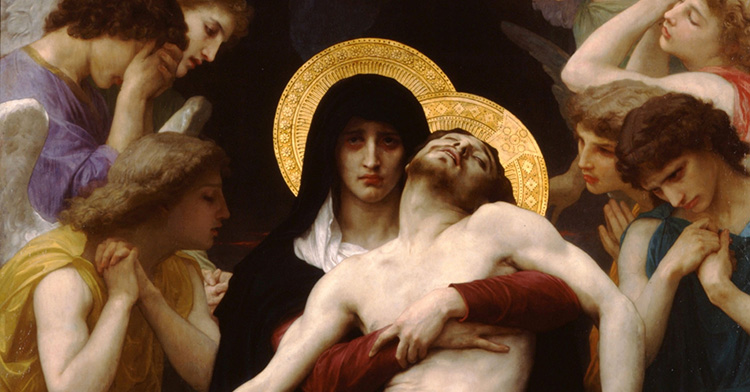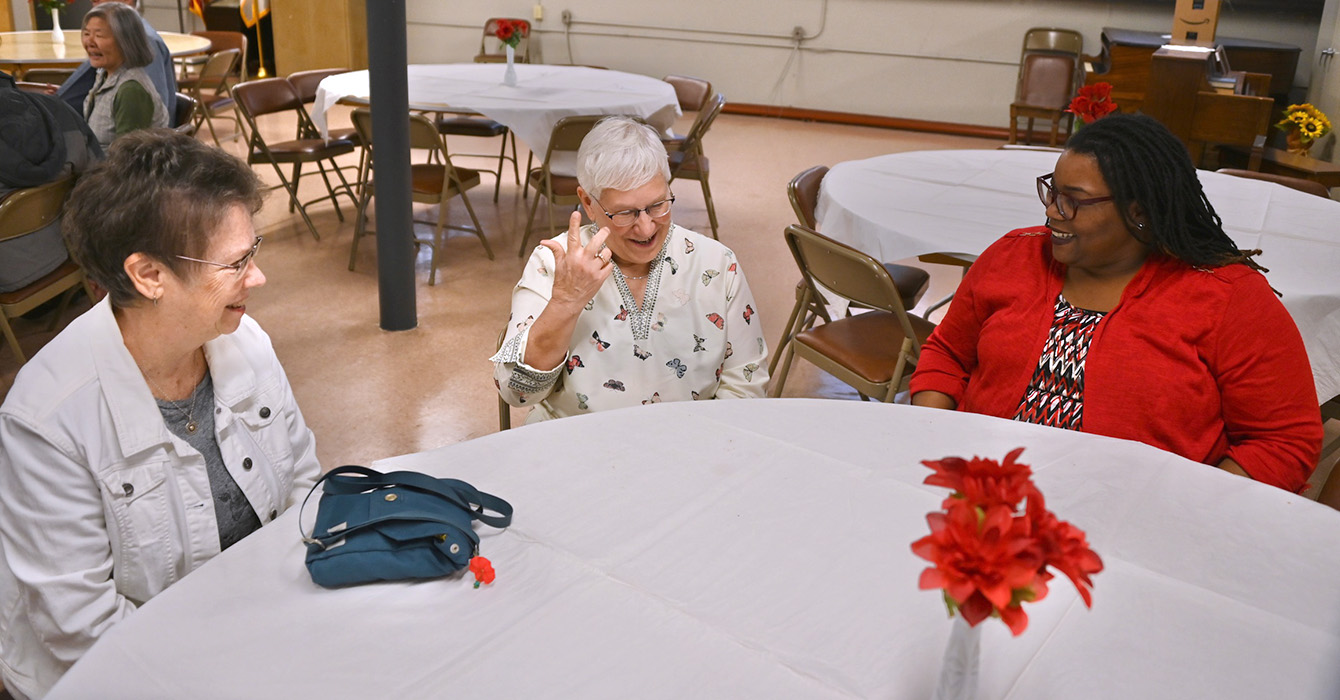One afternoon, my daughter texted me from college with a quote: “Evolutionary innovation occurs most easily and quickly in small populations.”
“Relevant to the church?” she asked.
“Yes!” I texted back. “Where did you hear this?”
“In my paleo-stratigraphy class.” she replied.
After almost 10 years as vicar of the Church of the Advocate, a small mission church in Chapel Hill, N.C., I know well the insecurities that can plague small churches. Compared with large churches, with their many programs, resources and staff members, small churches can easily feel overshadowed and somehow “less than.”
 But my life and ministry at the Advocate has also taught me the strength and beauty of small churches. At a time of extraordinary transformation, when the whole church is looking for new ways of being for a new generation in a new world, small churches can be an invaluable resource and a gift to the wider church. In many ways, small churches are the ones best-prepared to enter the way of revitalization and renewal, and to report back to those who will follow.
But my life and ministry at the Advocate has also taught me the strength and beauty of small churches. At a time of extraordinary transformation, when the whole church is looking for new ways of being for a new generation in a new world, small churches can be an invaluable resource and a gift to the wider church. In many ways, small churches are the ones best-prepared to enter the way of revitalization and renewal, and to report back to those who will follow.
The church certainly has no lack of small congregations. In virtually every denomination, most churches are small, with an average Sunday attendance of less than 100, even less than 50.
Are they -- are we -- ready to hear and to answer the call to lead? If so, we have much to offer the church and the world.
Small churches can be places of extraordinary community, the very thing that people today long for. In a small congregation, an individual can often find a sense of belonging more readily than in a large church. In a small congregation, Paul’s metaphor of the church as the body of Christ comes alive, with each individual essential to the whole (Romans 12:4-8, 1 Corinthians 12).
At the Church of the Advocate, we say every Sunday that the liturgy will be what it will be because of whomever God has called together in that time and place. The liturgy literally would not be the same if each person were not there.
What is true for the liturgy is even truer for the community and its life together. Each person brings her or his particular needs, history, skills and passions. The gadget-adroit teenager, the writer, the prisoner, the singer who can sing the tenor line, the rambunctious child, the chef, the chronically mentally ill adult, the carpenter -- each brings something essential to our life together.
With scant resources and fewer people to make things happen or support a budget, small churches are inherently vulnerable. But as sociologist Brené Brown has pointed out, both in her books and in a popular TED talk, vulnerability is not a bad trait to have. In vulnerability lies great strength -- for vital people and, as Brown made clear in a talk to the Consortium of Endowed Episcopal Parishes earlier this year, for vital congregations.
Those who minister in small churches have long known this vulnerability -- and the hidden strengths that it brings. Vulnerability helps us identify with the poor and needy. It helps us understand the vulnerability of Jesus and our dependence on God and one another. Vulnerability helps make us faithful.
In addition to the gifts of community and vulnerability, small churches are blessed with the capacity to try new things more easily than our larger counterparts. They can in the right circumstances be nimble and agile.
Sure, small churches are known for being averse to change. They often have members who are reluctant to give up control of some particular aspect of the congregation’s life, whether worship, music, outreach or finances. They can be closed systems with well-identified role players, each doing what he or she has always done, leaving little if any room for newcomers or for change. But it doesn’t have to be that way.
With fewer people in the pews to satisfy or mobilize, small churches can move and even experiment more readily than larger congregations can. Small churches can take a worship service outdoors or down the street on a moment’s notice. They can easily change how they do processions for a season to see whether another approach might be more meaningful.
Small churches can change their meeting time or the way they engage with the surrounding community with surprising swiftness. They can more readily talk about and explain, discuss, and even argue about changes with each other, and then break bread together in fellowship.
At the Advocate, for example, our relatively small size has enabled us to find times and ways throughout the church year to name and celebrate the ministry and vocation of the laity in the world. Through commissions, prayers and celebrations, our people are better able to connect their faith and their work.
Not far away, in Oxford, N.C., St. Cyprian’s Episcopal Church, a small, once-struggling historically African-American mission, offers an object lesson in change. After years of slow decline, the church embraced a call to be a place of reconciliation, healing and hospitality in a town with a notably racist past. The transformation of the congregation and its surrounding community has been palpable.
To some, words like “evolution,” “innovation,” “change” and “experiment” are frightening, distasteful, even heretical. But if the Spirit is moving in the church, we need to be alert to the ways the Spirit might be calling us to change.
Both as individuals and as congregations, too many of us have grown accustomed to certain ways of being and doing church. As with any change, the prospect of doing church in new and different ways seems uncomfortable, even frightening. It can require a deep and painful “letting go.”
Small churches have been letting go for years. They know what it means to be part of the body of Christ, and to have the gifts of vulnerability and flexibility.
They are called to lead the way. I pray that they will answer the call. And I pray that the wider church will find ways to encourage and nurture that call.
The paleontologists are right: Evolutionary innovation occurs most easily and quickly in small populations.









